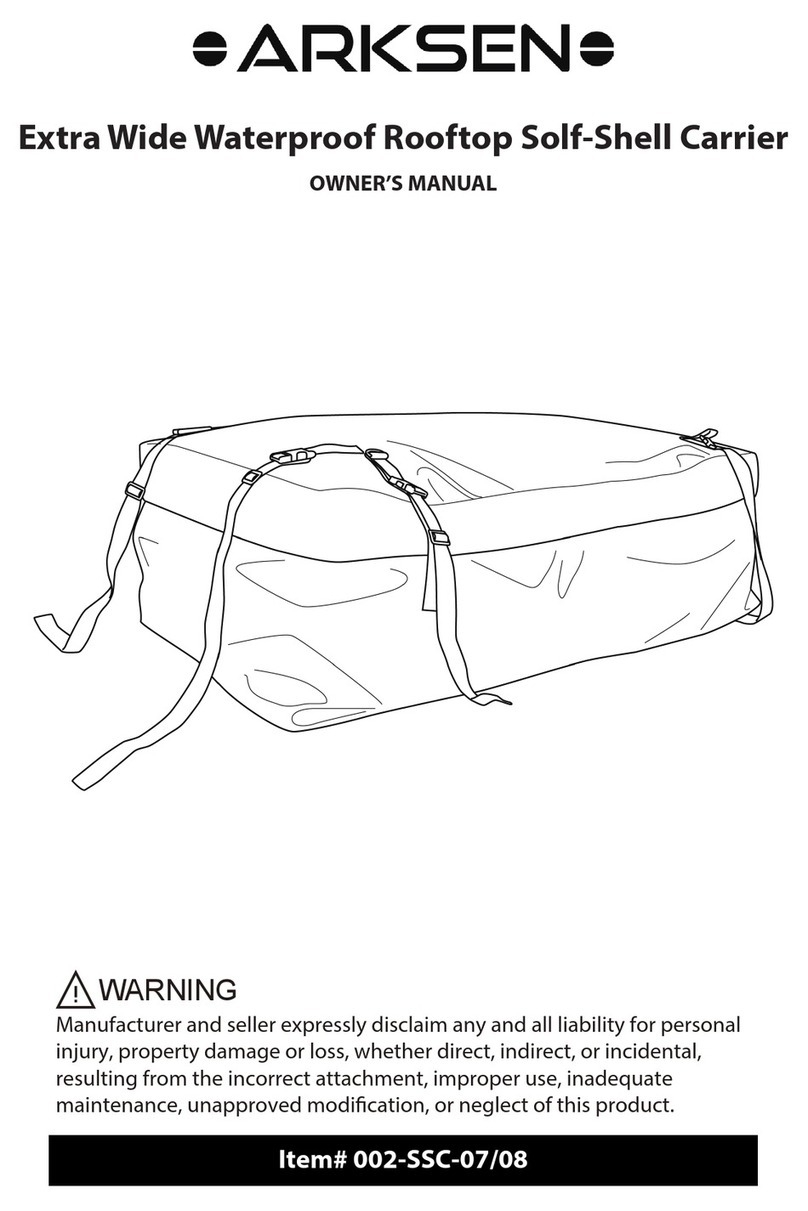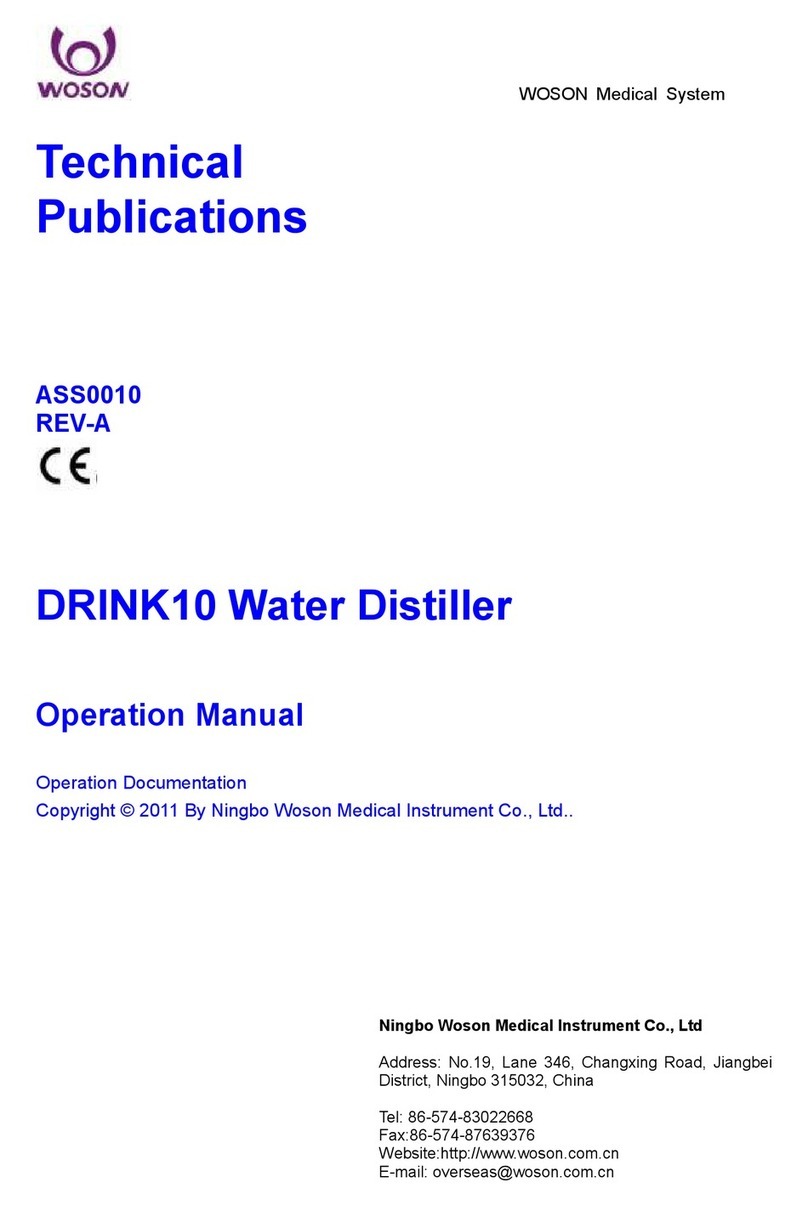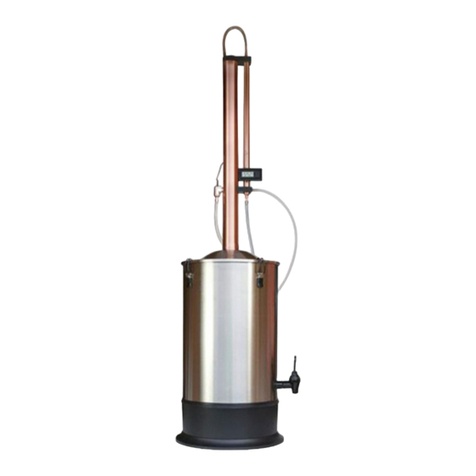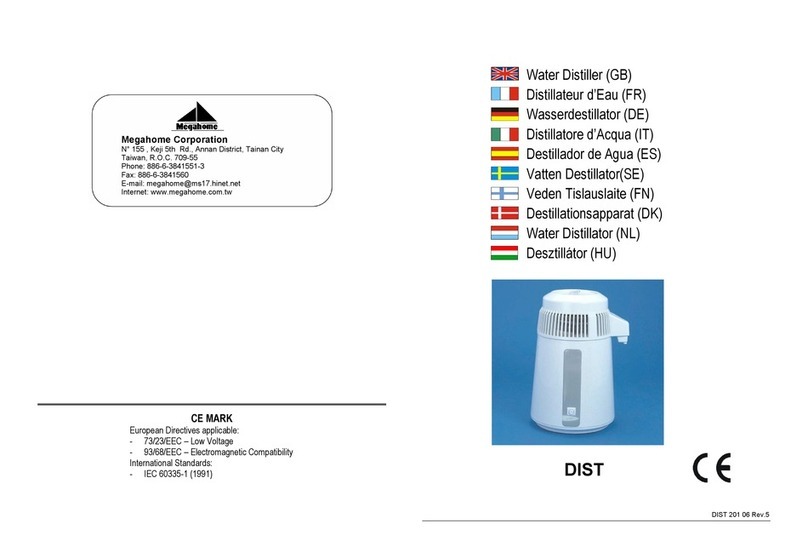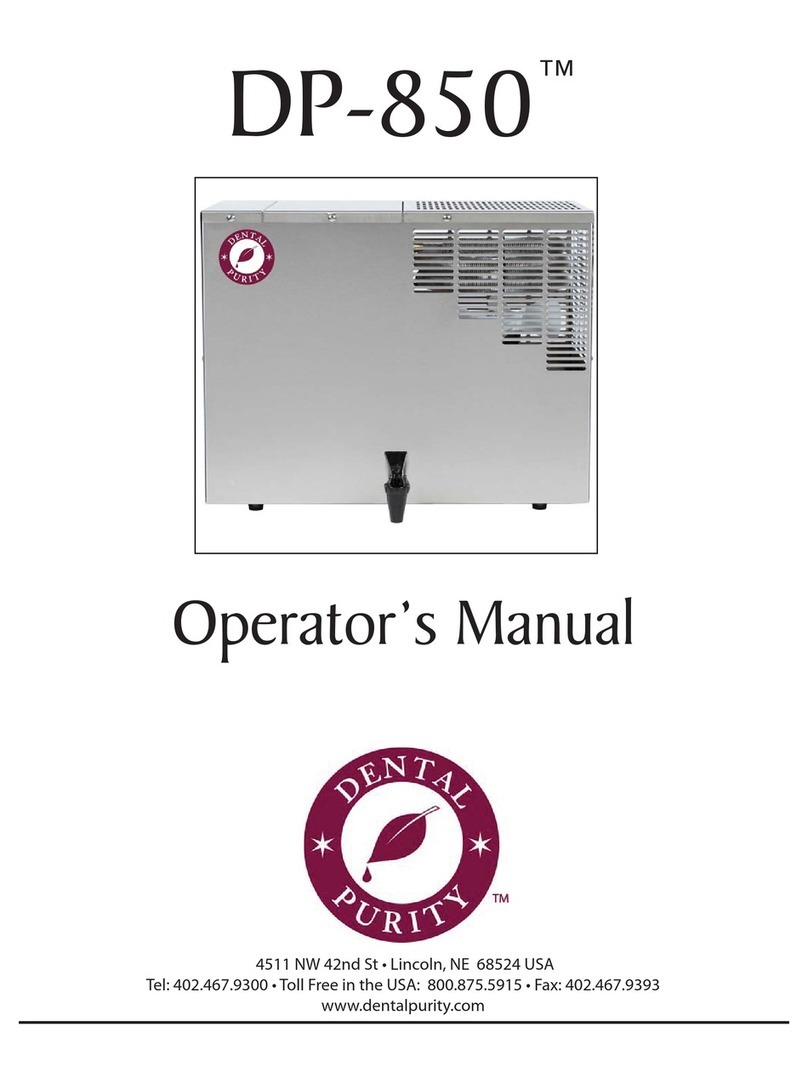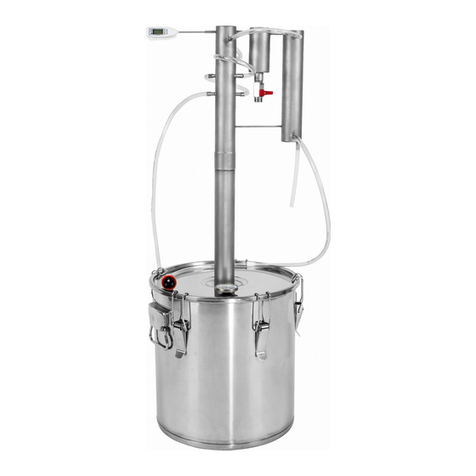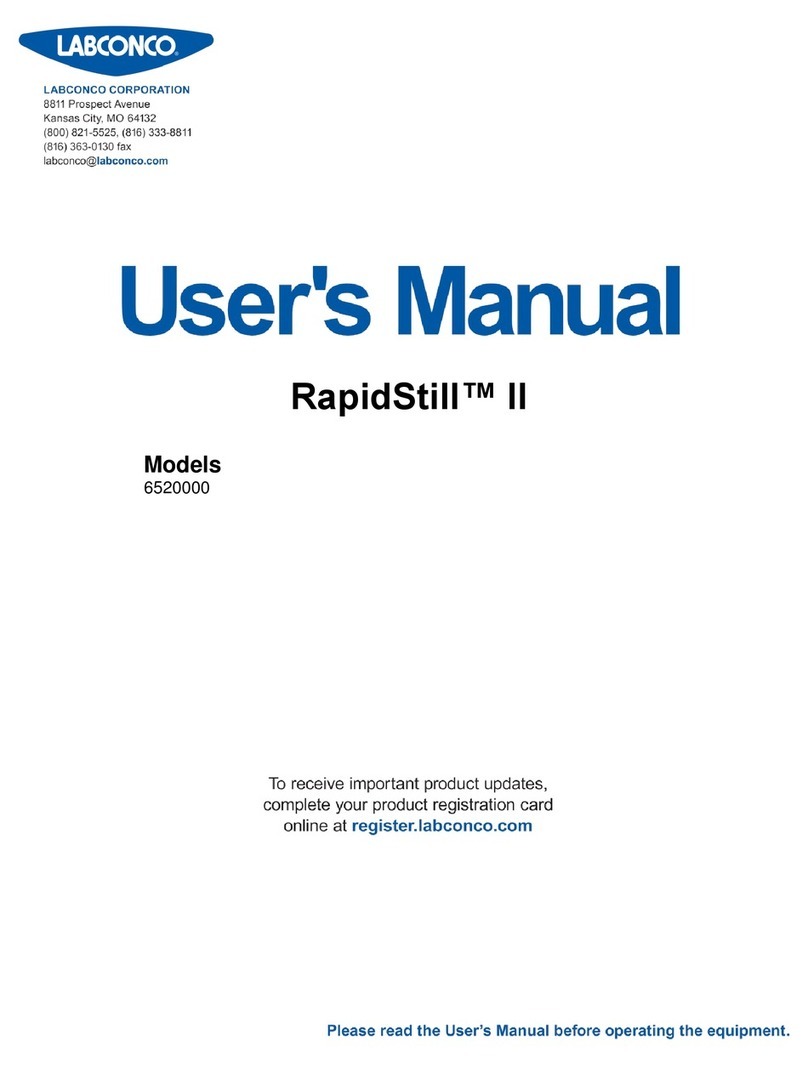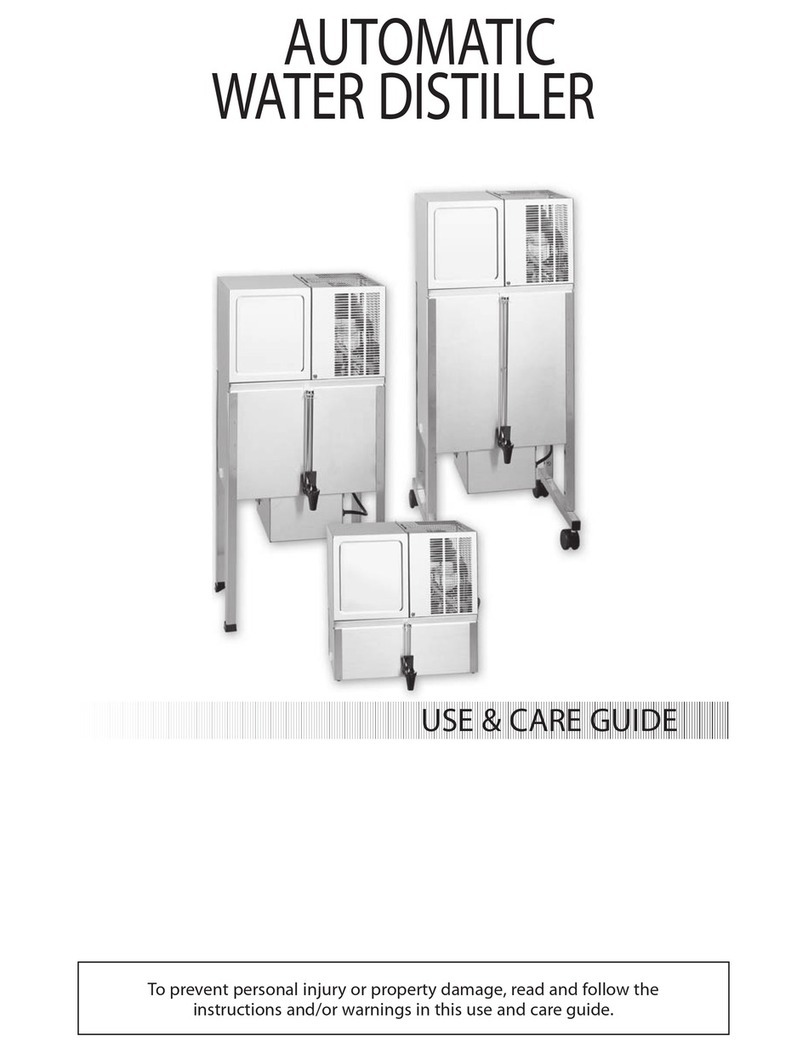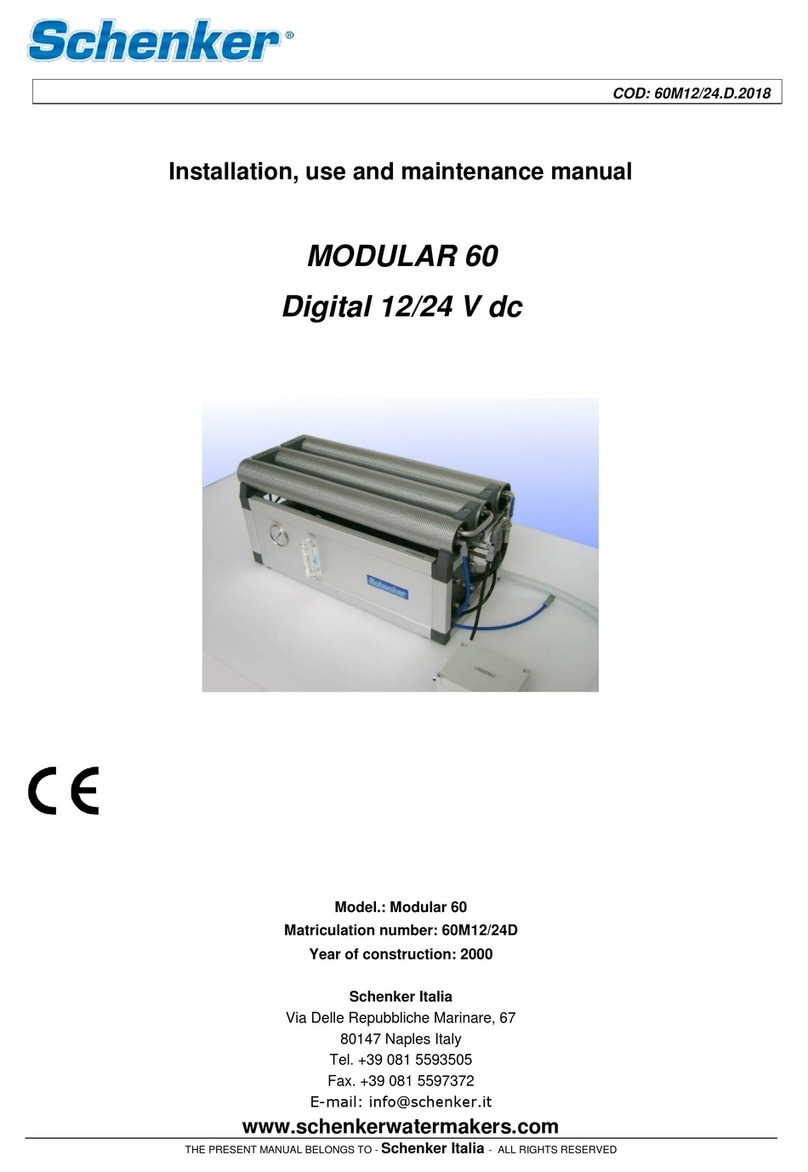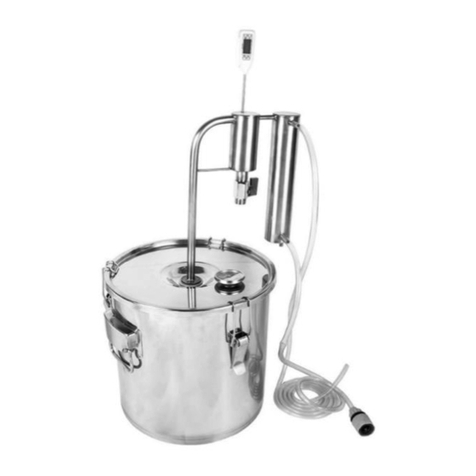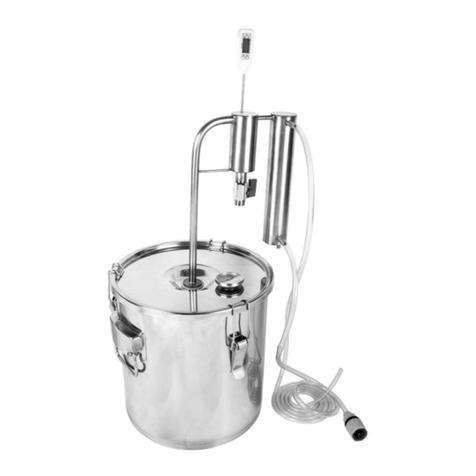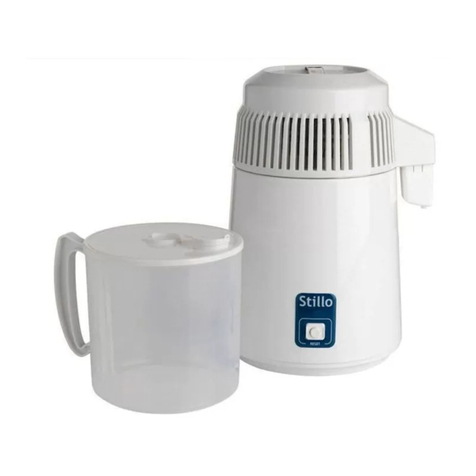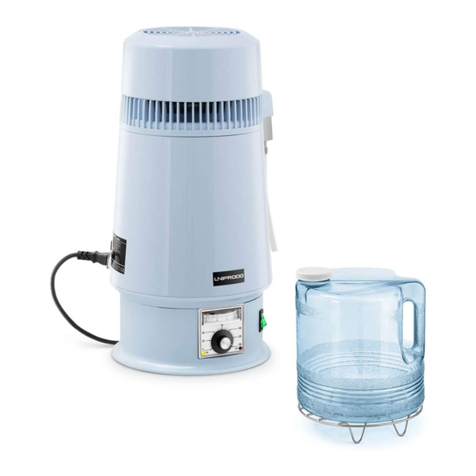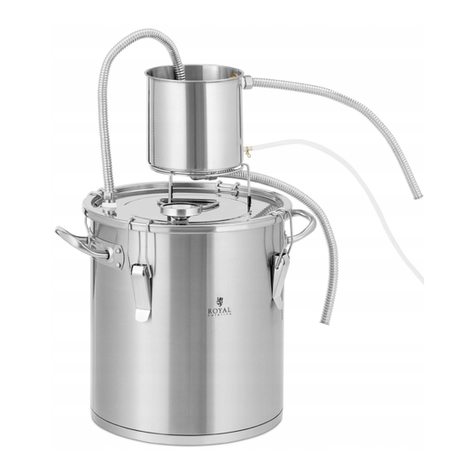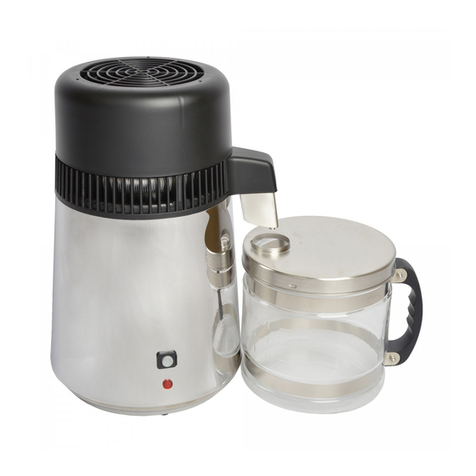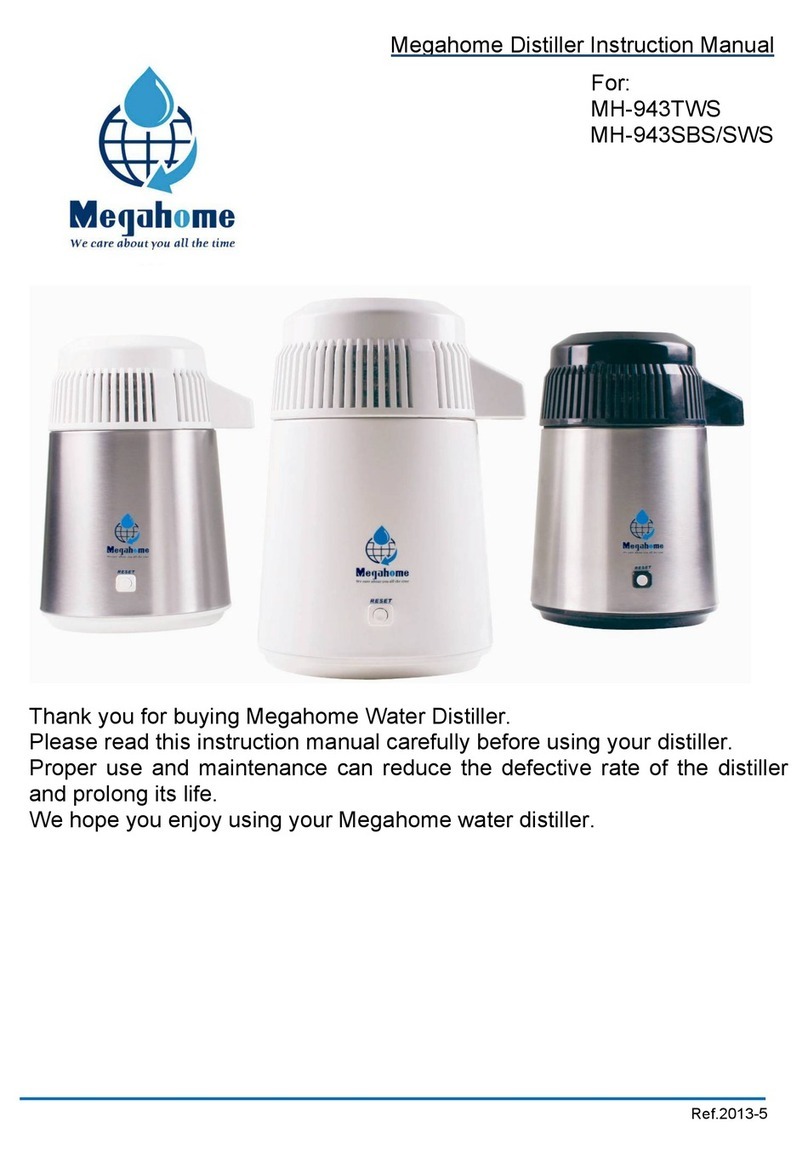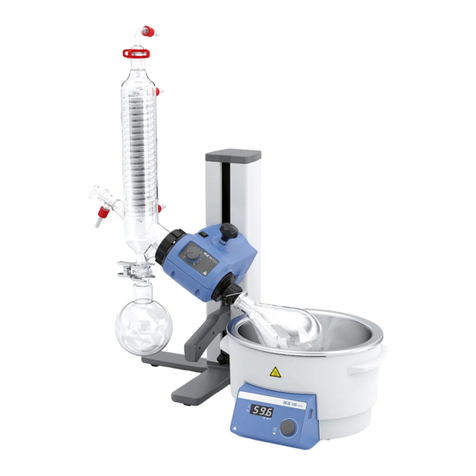Go Fermentor GOfermentor User manual

1
REQUIREMENTS
INSTANT WINERY! No infrastructure needed. No installation. No water usage. No wastewater
generation. No building permits. No expensive press to purchase, maintain and clean. Fully
automated punch – just set and forget. Estimate 2-4 manhours /batch total. Here is a quick
guide to winemaking in the GOfermentor and the equipment required. You can start your own
winery for approximately $8000. For detailed operation please consult the Operating Manual
and website www.GOfermentor.com.
Red Wine:
Filling:
Red wine is made using red grapes. The color and tannins are extracted from the skins and
seeds, and we do not recommend making red wine from juice or concentrates. Grapes can be
received in clusters or machine picked (destemmed and partially crushed).
1. Using grape clusters: Grapes are typically attached to the stems in clusters. Grapes can
be destemmed using a mechanical destemmer. An example is shown below:
Motorized destemmer/crusher with built-in grape pump. About $ 2000 from morewine.com
The destemmed grapes can be crushed using optional rollers below the destemmer or
left uncrushed altogether or in part (resulting in fruitier wine with less extraction). Next
they are loaded into the GOfermentor liner.
2. Using destemmed grapes: The destemmed grapes must be loaded into the GOfermentor
plastic bag. This is very easy if the destemmer has a built-in grape pump (such as the
one shown above). Simply connect the outlet of the grape pump to a 2 inch hose and
connect the other end to the front top port on the GOliner bag. Run the destemmer to
fill it with grapes. If the grapes are received destemmed, they can still be dumped into
the destemmer and conveyed. If a suitable destemmer with pump is not available, a
must pump capable of handling whole grapes should be used to pump the grapes into
the GOliner. Alternatively, grapes can be manually loaded by cutting an opening into the
liner and using a hopper above the GOLiner or simply transferring grapes by hand. The

2
opening is closed with tape after filling as detailed in the GOfermentor Operating
Manual.
Fermentation:
Each GOfermentor unit consists of a controller and an outer container (GObase). Options are
temperature probe/sampler (GOtemp) and cooling plate with valves (GOcooler). Minimum capacity is
200 Kg grapes (440 lbs) and maximum is 1000 Kg (metric ton = 2200 lbs), One ton of grapes will yield
between 120 and 160 gallons (600- 800 bottles) of wine.
Once the GOliner is filled with grapes, the next step is adding nutrients and yeast. These are
added through the front top inlet 2” Triclamp port.
Basic winemaking literature should be consulted for selecting suitable nutrients and yeast.
Pasteur Red is a good all-around yeast for most reds. A typical yeast addition is about 1.0
grams per gallon. Yeasts must be hydrated with great care at the precise temperature specified
by the manufacturer.
Filling through 2inch inlet port
Alternate manual filling
through hole in liner

3
Acidity often requires adjustment. If wine pH is above 3.45 just after crushing, it should be
corrected with tartaric acid. If grapes have soaked out 24 hours, the target pH is 3.60. A rule of
thumb is to add 2.0 grams of tartaric acid per anticipated gallon of wine for each 0.1 drop in pH
desired. If pH is below 3.45, don’t worry about it at this point. Deacidification may be
considered after fermentation.
The GOliner is a sterile container that permit control of the microbiological processes of
fermentation. It prevents contamination of the must (crushed grapes) from microorganisms
resident in the winery and cross-contamination from spoilage organisms from other batches
where they may have taken hold. However, each lot of grapes carries with it a substantial and
complex collection of mostly alcohol-intolerant wild yeasts and bacteria that sometimes create
undesirable prior to the onset of fermentation by your inoculum of commercial yeast. It is
conventional wisdom to suppress this activity by adding a small amount of sulfur dioxide at
crushing. For sound grapes, use a teaspoon of potassium metabisulfite (KMBS) for each 200
pounds, sprinkled in slowly at the crusher to obtain good mixing. The GOfermentor will do the
rest.
After additions, the exhaust vent is attached and in the inlet port closed. The fermentation will
now proceed and the GOliner will inflate with CO2. The punch schedule can be set and punches
started after 24 to 48 hours. Samples should be taken to determine the end of fermentation
(typically when all the sugar has been consumed). The easiest way to take samples is to use the
GOtemp sampling tube option.
A red wine fermentation proceeds hotter than white wines (next section) and ideally peaks
above 80oF for good extraction and color stability. While cooling is not essential for red wines,
you may find, depending on the room’s temperature and the grape load, that you are running
too hot (more than 90 oF). To control temperature pre-install a GOcooler heat exchanger
plate/control valve option. The GOtemp probe monitors fermentation temperature
automatically regulates the coolant supply valve to maintain the desired temperature setpoint.
The GOcooler plate is installed by placing it under the GOliner in the GOBase prior to filling. You
need to provide a pressurized source of circulating chilled water or glycol.
Pressing:
When the fermentation is complete the clean wine must be pressed out leaving the waste skins
and seeds (pomace) behind. Traditionally pressing is done by transferring the fermented must
to a dedicated press. These presses cost between $ 3000 to $ 20,000. In addition to the cost,
they require tedious cleaning and maintenance. In contrast, The GOfermentor does NOT need
any external press. Pressing is done in the GOliner itself, eliminating the cost of a press and
required labor and washing.

4
To press from the GOfermentor you need the optional GOpress pressing tube. Remove the
VENT assembly from he GOliner and insert the GOpress tube. Fasten with the supplied special
triclamp. Now connect a wine pump to the outlet of the GOpress tube using a 2-inch hose.
Connect the outlet of the wine pump to a collection vessel. The collection vessel can be a tank,
barrel, or best of all a SmartBarrel bag. The wine pump sucks the wine through the GOpress
tube and transfers it to the clean wine collection vessel as shown in the diagram below:
The wine pump can be inexpensive because it does not need to handle solids but must be
capable of self-priming. Suitable pumps are flexible, impeller, positive displacement, or
diaphragm. A suitable pump for example :
While not necessary, you should get a pump capable of variable speed
and reverse. This pump is also very useful for general winery
operations.
Start the pump and collect the free-run wine. It will be strained in the GOpress tube so there
will be no seeds, stems, or skins. When the free-run slows down, activate the PUNCH feature a
few times to squeeze residual wine out of the skins. Yield is slightly (1-2 gallon/ton) less than
hard press, but the whole process takes only 30 minutes and there is minimal clean-up. No
expensive press needed. When the pressing is complete, remove the GOpress tube and dispose
of the residual pomace as described next.

5
Disposal:
The easiest way to get the waste pomace-filled liner out of the GObase is to twist the top of the
liner and tie a lifting strap. Then use a winch, automotive engine lifter, or forklift to lift it out.
You can dispose the pomace in compost heap, or spread it into the vineyard as fertilizer. The
empty liner can be disposed in household garbage. It is not UV stabilized and will rapidly
disintegrate in a landfill.
Racking:
After pressing, the red wine is allowed to settle leftover yeast to a sediment. A secondary
malolactic bacterial fermentation may occur within weeks or months. This is considered
desirable to soften acidity and prevent its spontaneous occurrence later in the bottle.
Malolactic may be encouraged by inoculation with commercial bacteria and holding the wine at
70oF. The onset and completion of ML can be tracked using an inexpensive paper
chromatography kit available from any winemaking supply store or from Enartis for $185.
After malolactic completion, the clarified wine is transferred to another vessel. With the
SmartBarrel, this is very easy. Simply attach a hose to the fill/discharge port on the SmartBarrel
diptube fitting attached to the bag containing the pressed wine and using a small wine pump
transfer it to another SmartBarrel equipped bag. The SmartBarrel diptube will drop as the bag is
pumped out ensuring that the upper layer of clear wine is transferred first. Stop the transfer
when you see cloudy material and discard the first bag with the sediments. No cleaning!
Conventionally, sulfur dioxide is added to the receiving vessel at the first post-ML racking to
prevent oxidation and control microbiology. The initial addition of one teaspoon (4.5 gm)
KMBS per 10 gallons should result in 25-30 ppm free SO2. This can be measured with a
Vinmetrica SC-300 assembly ($500 from More Wine) which also measures pH and TA.
The racking procedure is repeated 2 or 3 times until the wine is clear and stable. Each racking
can be a month or longer. Wood products, such as chips or staves can be added to a racking bag
to add oaky flavors if desired. Free SO2 should be maintained at 25-35 ppm.
For the adventurous, good results have been obtained with GOfermentor technology without
any sulfur dioxide additions. The system’s design minimizes contamination, thus greatly
reducing the risk of this strategy.
Finally, the wine is ready for blending, bottling, or long-term storage in barrels or SmartBarrels.
Cheers!
Table of contents
